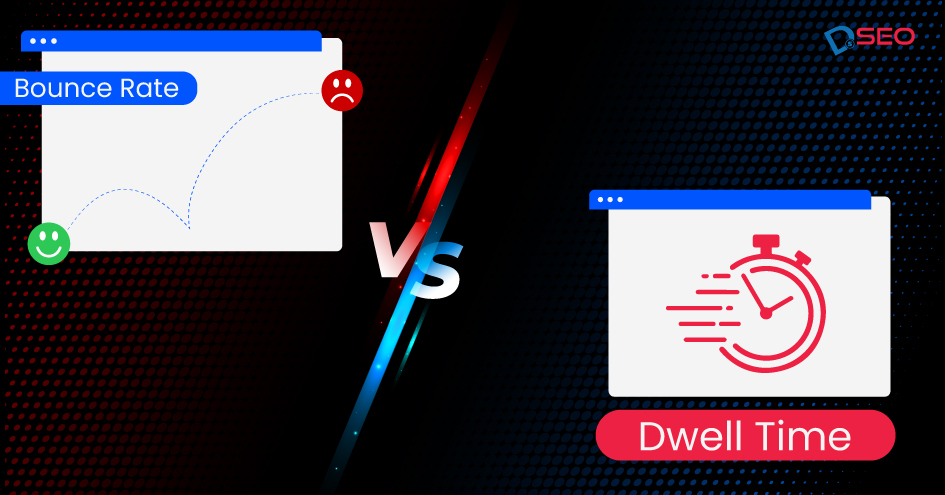
6 Top Features of Google Analytics 4: Must-Read Guide
June 29, 2023 / Uncategorized
As a marketer, you understand the importance of data-driven decision-making. Harnessing the power of analytics is crucial to gaining valuable insights and optimizing your marketing strategies. One tool that has transformed how digital marketers record and examine data is Google Analytics 4.
In this post, we will delve into the world of Google Analytics 4 and explore its key features that every marketer should know. Whether you’re experienced or just a beginner with analytics, knowing the capabilities of this tool will empower you to make well-versed decisions and gain meaningful results for your business.
Understanding Google Analytics 4
Google Analytics 4, aka GA4, is the latest update of the powerful analytics offered by Google. It is a comprehensive solution for marketers seeking in-depth insights into their website or app performance.
With this feature, marketers can track and analyze data from various digital sources. This allows for a more complete understanding of the customer journey and facilitates the identification of critical touchpoints where improvements are required.
Feature 1: Enhanced Cross-Platform Tracking
With this update, you can easily track user interactions on various websites. This means that regardless of whether a user visits your website on their desktop, engages with your mobile app, or interacts with your brand offline, you can capture and analyze their actions in a unified manner.
Benefits of Enhanced Cross-Platform Tracking
The enhanced cross-platform tracking feature offers several benefits for marketers:
Holistic Customer View: Marketers gain valuable insights into how customers engage with their brand by analyzing user interactions on multiple platforms. This understanding helps in creating more targeted and personalized marketing strategies.
Improved Attribution Modeling: Cross-platform tracking allows for better attribution modeling, enabling marketers to accurately attribute conversions and interactions to the appropriate channels and touchpoints. This insight helps optimize marketing efforts and allocate resources effectively.
Smooth User Experience: With cross-platform tracking, marketers get a seamless user experience across different platforms. This enhances customer satisfaction and encourages engagement and conversions rate optimization.
Feature 2: Event-Based Tracking
Event-based tracking is a powerful feature of Google Analytics 4 that allows marketers to track user interactions on their platform. Unlike traditional pageview-based tracking, event-based tracking provides more granular insights into user behavior, enabling marketers to measure and analyze specific actions taken by users.
Benefits of Event-Based Tracking:
Customized Measurement: Event-based tracking allows marketers to measure and analyze specific actions that align with their business objectives. This flexibility enables a deeper understanding of user behavior and engagement.
Goal Tracking and Conversion Optimization: Digital marketers can set up goals and track conversions by tracking key events such as form submissions or button clicks. This information helps optimize conversion funnels, identify bottlenecks, and improve the overall website or app performance.
User Behavior Analysis: Event-based tracking provides insights into user interactions beyond pageviews. Marketers can easily analyze how users navigate through their platform, which features they engage with the most, and identify patterns in user behavior.
Feature 3: Customer Lifecycle Tracking
This update by Goggle offers robust capabilities for tracking the customer lifecycle, allowing marketers to understand how users engage with their business at different stages. By analyzing the customer lifecycle, marketers can identify opportunities for improvement, personalize experiences, and drive customer loyalty.
Benefits of Customer Lifecycle Tracking
Acquisition: This stage focuses on tracking how users discover and first interact with your brand. Google Analytics 4 offers insights into the sources that promotes traffic to your website . Marketers can analyze the effectiveness of their marketing campaigns, optimize their acquisition strategies, and identify high-performing channels.
Engagement: Once users have interacted with your brand, tracking their engagement levels is crucial. This feature lets you measure user interactions, such as page views, session duration, and scroll depth. By understanding how users engage with your content, marketers can optimize their website or app for better user experiences and increased engagement.
Conversion: The conversion stage involves tracking actions that indicate a successful outcome, such as purchases, sign-ups, or form submissions. This update provides robust tracking capabilities to measure and analyze conversions. Marketers can set conversion goals, track funnel progression, and optimize their conversion paths for higher conversion rates.
Feature 4: Streamlined Data Analysis and Reporting
This update by Google offers streamlined data analysis and reporting features that empower marketers to make informed decisions based on accurate and relevant insights.
Benefits of streamlined data analysis and reporting process.
Unified Data Model: Analytics 4 introduces a unified data model that combines user-centric data from multiple platforms and devices. This unified view allows marketers to analyze the entire customer journey and comprehensively understand user behavior across different touchpoints.
Machine Learning Insights: This tool influences machine learning algorithms to automatically surface valuable insights from the gathered data. Marketers can benefit from pre-built insights highlighting significant trends, anomalies, and opportunities, enabling them to take prompt action and optimize their marketing strategies.
Exploration and Analysis Tools: Google Analytics 4 provides a range of powerful exploration and analysis tools that make it easier for marketers to dig deeper into their data. With customizable reports, advanced filtering, and data exploration options, marketers can uncover meaningful patterns, segment their audience, and gain actionable insights.
Feature 5: Enhanced E-commerce Tracking
Analytics 4 brings enhanced e-commerce tracking capabilities, allowing marketers to gain deeper insights into their online sales and optimize their e-commerce marketing strategies.
Benefits of E-commerce tracking features
Enhanced Purchase Measurement: With Analytics 4, tracking and measuring e-commerce purchases becomes more robust and accurate. Marketers can easily monitor transaction data, including purchase value, products sold, and revenue generated. This information helps marketers understand customers’ purchasing behavior and make data-driven decisions to improve their online sales performance.
Customizable E-commerce Events: Analytics 4 enables marketers to define custom events for specific e-commerce actions, such as product views, add-to-cart, and checkout steps. This flexibility allows marketers to track and analyze user interactions at each stage of the customer journey, gaining valuable insights into user behavior and identifying areas for improvement.
E-commerce Funnel Analysis: Analytics 4 offers advanced funnel analysis for e-commerce tracking. Marketers can visualize and analyze the conversion funnel, from initial product discovery to the final purchase, identifying drop-off points and optimizing the user experience to drive higher conversions.
Feature 6: Audience Engagement and Retention Metrics
Analytics 4 provides robust audience engagement and retention metrics that help marketers measure and understand user loyalty, engagement, and long-term value.
Benefits Of Audience Engagement and Retention
User Lifetime Value (LTV): Analytics 4 introduces User Lifetime Value as a core metric, allowing marketers to measure the value of their customers over time. By understanding the LTV, marketers can identify high-value customers, tailor their marketing strategies accordingly, and focus on retaining and nurturing these valuable segments.
Engagement Metrics: Analytics 4 offers a range of engagement metrics to assess user interactions with your website or app. Metrics such as session duration, screen views, and event counts help marketers gauge how users engage with their digital properties and identify opportunities for improvement.
Cohort Analysis: Cohort analysis in Analytics 4 allows marketers to segment users based on specific criteria, such as acquisition date or behavior. This analysis helps track the behavior of different user groups over time, providing insights into user retention, engagement, and conversion patterns. Marketers can use this information to optimize their campaigns, personalize user experiences, and drive long-term loyalty.
Conclusion
Google Analytics 4 offers many features and benefits that can significantly impact your marketing efforts. At Deftsoft, we understand the importance of leveraging advanced analytics tools to gain valuable insights and drive business growth. Our team of experts knows Google Analytics 4 and can help you make the most of its capabilities. Reach out to Deftsoft now and let us be your trusted partner in achieving marketing success.









